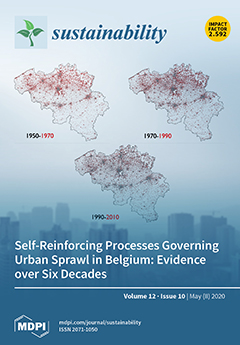Since the implementation of the Belt and Road Initiative, China’s total amount of outward foreign direct investment (OFDI) has increased each year and this has caused its relationship with carbon emissions (CO
2e) to receive great attention recently. Forecasting China’s CO
2
[...] Read more.
Since the implementation of the Belt and Road Initiative, China’s total amount of outward foreign direct investment (OFDI) has increased each year and this has caused its relationship with carbon emissions (CO
2e) to receive great attention recently. Forecasting China’s CO
2e accurately by considering the impact of OFDI is important since the government can use it to formulate an appropriate emissions plan to fulfill its carbon reduction commitments. Because the relationship between OFDI and CO
2e has nonlinear characteristics, a nonlinear grey multivariable model with fractional-order accumulation (NFGM(1,N)) was proposed in this study. To enhance the prediction accuracy, an optimization process was used to determine the parameters. The outcomes of the variable fractional order showed that fractional-order accumulation can better extract the grey information hidden in the original data, which confirmed the principle of new information priority. The result of the power coefficient indicated a nonlinear relationship between the CO
2e and OFDI. Based on the prediction performance, the prediction accuracy of the NFGM(1,N) model was proven to be superior to those of the ARMA model, linear regression model, the GM(1,1), GM(1,N), and FGM(1,N) models. The empirical results also revealed that OFDI increased the CO
2e in China. The relationship between the CO
2e and OFDI exhibits a U-shaped development based on further predictions for the 2018–2030 period. Finally, some suggestions for long-term CO
2e reduction plans were provided in this paper.
Full article





